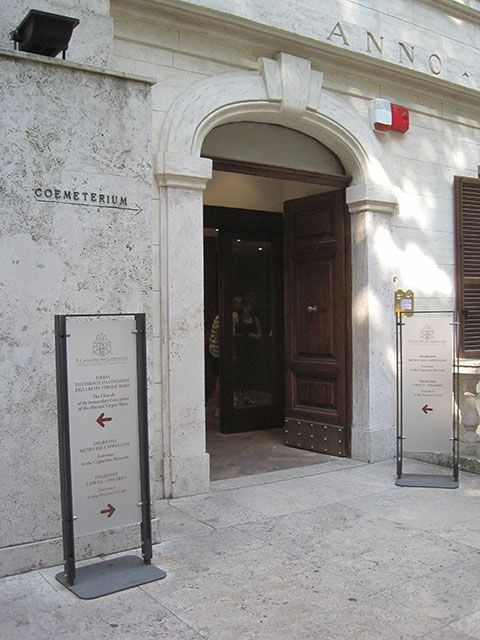Last Chance to Catch NYC's Holiday Notalgia Train
We met the voices of the NYC subway on our nostalgia ride this weekend!


Photo by Ellen Ryan
Of all the places you might find the Capuchin crypt, the Via Veneto in Rome seems to be the unlikeliest location. But amid this district of four star hotels, expensive restaurants and swanky habitués, there resides a strange ossuary that has survived the centuries. Here, five successive chambers are decorated in carefully wrought patterns and vignettes constructed entirely of human bones and mummified corpses.
Constructed somewhere between 1732-75, five rooms hold the bones of over 3,700 Capuchin friars as well as indigent Romans, including children. But even the Capuchins cannot provide a direct or definitive explanation for the peculiar display of human bones and mummified corpses that is found here. The crypt and the church, the Santa Maria della Concezione dei Cappuccini, were established here in 1631 due to the Capuchin order’s close association with the wealthy Barberini’s who built their family palazzo nearby. The buildings were constructed on land donated by the Ludovisi family, another Renaissance Rome powerhouse family.
The Marquis de Sade himself called this memento mori a “monument of funerary art.” Nathaniel Hawthorne visited and felt the oppressive weight of the display. “Not here,” he wrote “can we feel ourselves immortal.” Indeed, the visitor is greeted with a sign that reads: What you are now, we once were; what we are now, you shall be.
The rooms, arranged along a windowed corridor, have practical names like “The Crypt of Shin Bones and Thigh Bones.” And the decoration is not limited to the walls. Looking up, the arrangements of bones are set into the ceiling as well and include macabre chandeliers that loom above the uneasy visitor. The bones have been fashioned into rosettes, crosses, coats of arms, crowns, and stars as well as two explicit reminders of the passage of time – an hour glass and a clock with no hands. Diaramas of corpses can be seen, praying and resting on carefully mounded piles of bones.
The crypt also includes a number of burials, the dirt brought from the holy land in the 19th century. The last room in the series strikes a more hopeful note, embracing the theme of resurrection. Still, the crypt is overwhelming and seeing the bookstore at the end of the corridor is a welcome relief.
The entrance fee includes the Capuchin museum, which most visitors barely acknowledge as they speed their way towards the main attraction. Completed recently, the museum is thoughtfully curated, with multi-media exhibitions, relics, and artifacts that tell the story of this mendicant order of the Franciscans. Their identity was one of “industrious ascetism,” and the products of their labors are among the collection’s highlights. The museum does not shy away from the self-disciplinary aspects of the friars either, with sobering examples of metal scourges, hair shirts and knotted cords on display.
The museum exhibition ends with a “Capuchins today” montage and a homage to friars that have been canonized for sainthood. You are then deposited at the entrance to the crypt.
Note: No photographs can be taken inside the crypt. Get in touch with the author @ellenville8.
Subscribe to our newsletter